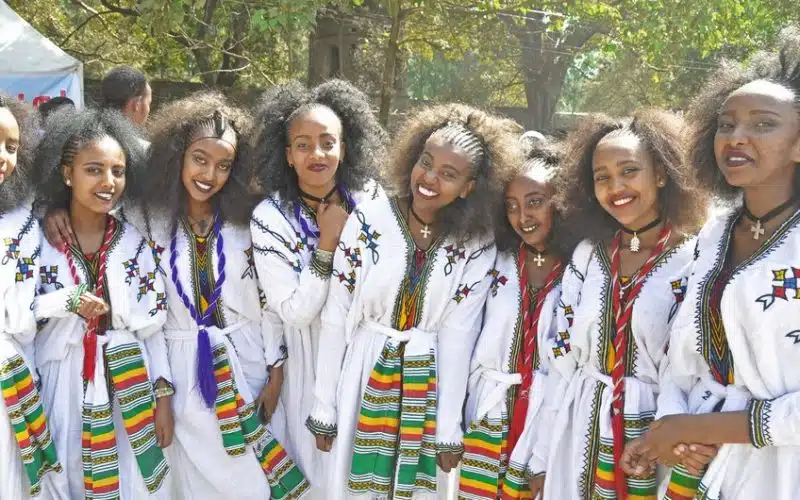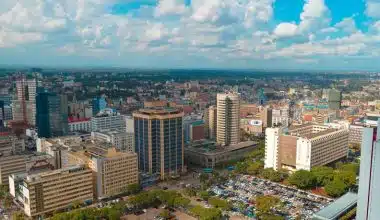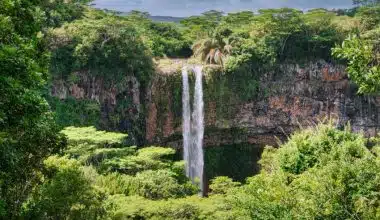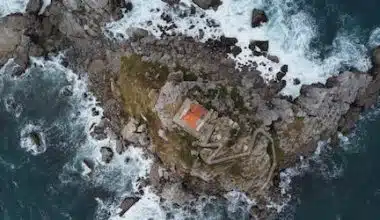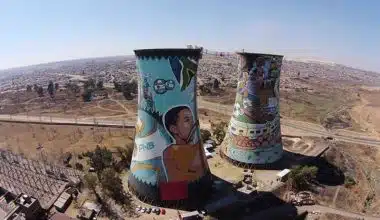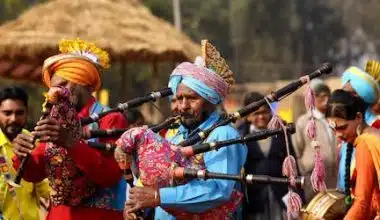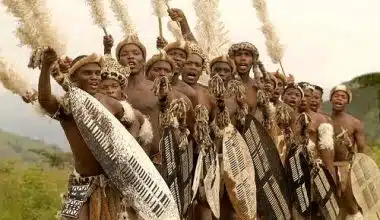Meet the resilient and culturally rich people of Eritrea, a nation nestled along the Red Sea with a history as diverse as its landscapes. Eritrea, a Horn of Africa country, has a diverse population of nine ethnic groups, diverse languages, and rich cultural traditions. Eritreans are known for their beauty and are ranked sixth on the list of countries with the most beautiful girls. The country has a relatively low population density and a long history of independence struggles. Read more about Eritrean people in this article.
Eritrean People
Eritrea is a country located in the Horn of Africa, and its people are known as Eritreans. The Eritrean population is diverse, consisting of various ethnic groups with distinct languages, cultures, and traditions.
Fact About The Eritrean People
#1. Ethnic Diversity
Eritrea is home to nine official ethnic groups, each with its own unique characteristics and cultural practices. These ethnic groups include the Tigrinya, Bilen, Tigre, Saho, Afar, Rashaida, Nara, Kunama, and Hidareb.
#2. Language
The Eritrean people speak different languages, with Tigrinya being the most widely spoken language. Other languages spoken in Eritrea include Tigre, Saho, Afar, Bilen, and Kunama, among others.
#3. Cultural Diversity
Eritrean culture is rich and diverse, influenced by the various ethnic groups and their traditions. Each ethnic group has its unique music, dance, clothing, food, and customs, contributing to the vibrant cultural tapestry of the country.
#4. Beautiful People
Eritreans are often recognized for their beauty, with Eritrea being ranked sixth in the list of countries with the most beautiful girls. Eritreans, along with Northern Ethiopians, have a genetically unique phenotype and are genetically more closely related to Mediterranean groups like Berbers and Arabs.
#5. Population
As of 2023, Eritrea has a population of approximately 6 million people The population density in Eritrea is relatively low, with 37 people per square kilometer.
#6. Diaspora
Eritreans can be found in various parts of the world due to migration and the Eritrean diaspora. Many Eritreans have settled in countries such as the United States, Canada, Australia, and European nations, contributing to the cultural diversity of these regions.
#7. Independence Struggle
Eritrea’s fight for independence from Ethiopia spanned several decades. The Eritrean Liberation Front (ELF) was formed in 1958, and in 1991, the Eritrean People’s Liberation Front (EPLF) captured the Eritrean capital, Asmara, leading to the formation of a provisional government. In 1993, Eritreans voted overwhelmingly for independence.
#8. Physical Characteristics
Eritreans have a diverse range of physical features due to the country’s historical and geographical influences. Some Eritreans have features that could be mistaken for several different races, and they are genetically more closely related to Mediterranean groups like Berbers and Arabs.
#9. Eritrean Refugees
Eritreans have been among the significant groups of refugees seeking asylum in various parts of the world. Many Eritreans have fled their country due to political persecution, human rights concerns, and economic difficulties. Eritrean refugees have sought safety and better opportunities in countries such as Italy, the United Kingdom, and Israel.
#10. Strong Sense of National Identity
Eritreans have a strong sense of national identity and patriotism. The struggle for independence has fostered a collective consciousness and a deep attachment to their country. Eritreans often express their love for their homeland and their commitment to its development and progress.
Challenges Faced by the Eritrean People
The Eritrean people face several challenges across various aspects of their lives. These challenges include:
#1. Health Care Challenges
Eritrea faces numerous challenges within its healthcare system. The country struggles with limited access to healthcare services, inadequate infrastructure, and a shortage of medical professionals.
#2. Human Rights Violations
The Eritrean government has been accused of committing human rights violations, including war crimes, crimes against humanity, and other serious violations against its people. These violations have led to significant challenges for the Eritrean population, including limited freedom of expression, arbitrary arrests, and forced conscription.
#3. Mental Health Issues
Mental health is a significant concern in Eritrea. People with mental illnesses often face isolation, exclusion, and limited access to mental health services.
#4. Displacement and Refugee Crisis
Eritreans who have been displaced or become refugees face numerous challenges. Many Eritrean refugees have fled to neighboring countries, such as Ethiopia, where they encounter similar challenges, including limited access to basic services, economic opportunities, and protection.
#5. Education Challenges
The education sector in Eritrea faces various challenges. Limited resources, inadequate infrastructure, and a lack of qualified teachers contribute to difficulties in providing quality education.
#6. Poverty and Economic Challenges
Poverty is a significant challenge in Eritrea, with a large percentage of the population living below the poverty line. Limited economic opportunities, high unemployment rates, and reliance on remittances contribute to the prevalence of poverty.
#7. Ethnic and Indigenous Challenges
Different ethnic and indigenous groups in Eritrea face challenges related to their identity and rights. These challenges include struggles for recognition, preservation of cultural heritage, and equal representation.
#8. Limited Political Freedom
Eritrea has limited political freedom, with restrictions on freedom of speech, assembly, and association. The lack of political pluralism and democratic institutions poses challenges for the Eritrean people in expressing their opinions and participating in decision-making processes.
#9. Food Insecurity
Eritrea has experienced recurrent droughts and limited agricultural productivity, leading to food shortages and widespread food insecurity. Many people struggle to access nutritious food consistently.
#10. Gender Inequality and Gender-Based Violence
Eritrea faces significant gender inequalities, including limited access to education and employment opportunities for women. Gender-based violence, including early and forced marriages, is also a concern.
Things To Do In Eritrea
#1. Visit Tourist Attractions
Eritrea offers various tourist attractions to explore. Some popular places to visit include Asmara, the capital city known for its Italian colonial architecture and vibrant street life; Massawa, a historic port city with Ottoman, Egyptian, and Italian influences; and the Dahlak Archipelago, a group of islands known for their pristine beaches and marine life.
Eritrea has hidden attractions and unique sights to explore. For example, you can visit the Eritrean Railway, a historic railway line that connects Asmara to Massawa and offers scenic views. The Medeber Market is another interesting place to visit, known for its vibrant atmosphere and local crafts.
#3. Experience Cultural Heritage
Eritrea has a rich cultural heritage, and you can immerse yourself in the local traditions and customs. Explore traditional crafts such as pottery, weaving, and metalwork, which are passed down through generations. You can also attend cultural festivals and events to experience Eritrean music, dance, and cuisine.
#4. Enjoy Outdoor Activities
Eritrea offers opportunities for outdoor enthusiasts. You can go hiking in scenic landscapes, such as the Semien Mountains or the Gash-Barka region. Diving and snorkeling in the Red Sea waters of the Dahlak Archipelago are popular activities for water lovers.
#5. Explore Historical Sites
Eritrea has a rich history, and there are several historical sites to explore. The ruins of ancient cities like Adulis and Qohaito provide insights into the region’s past civilizations. The National Museum of Eritrea in Asmara showcases archaeological artifacts and cultural exhibits.
#6. Explore Asmara
Asmara, the capital and largest city in Eritrea is a unique city with a blend of Italian colonial architecture and African charm. The city is known for its Art Deco buildings, cafes, and the Asmara Opera, a beautiful Italian-style opera house. You can also visit the National Museum of Eritrea in Asmara to learn about the country’s history and culture.
#7. Visit Massawa
Massawa is a historic port city that was damaged during the Struggle for Independence. Despite this, the city still reflects its past glory with its unique blend of Ottoman, Egyptian, and Italian influences. You can explore the old town, visit the local markets, and enjoy the local cuisine.
Famous Eritrean People
Many other notable individuals of Eritrean descent have made significant contributions in various fields.
#1. Joe Neguse
Joe Neguse is an American politician of Eritrean descent. He is a member of the United States House of Representatives, representing Colorado’s 2nd congressional district.
#2. Tiffany Haddish
Tiffany Haddish is a renowned American actress, comedian, and author. She has gained recognition for her roles in movies such as “Girls Trip” and “Night School.” Haddish proudly embraces her Eritrean heritage.
#3. Bereket Mengisteab
Bereket Mengisteab is a prominent Eritrean singer and songwriter known for his contributions to Eritrean music. He has released numerous albums and is celebrated for his unique musical style.
#4. Helen Meles
Helen Meles is a popular Eritrean singer and actress. She has released several successful albums and has acted in Eritrean films and TV series.
#5. Meb Keflezighi
Meb Keflezighi is a renowned long-distance runner. He won the Boston Marathon in 2014, becoming the first American man to win the race since 1983. Keflezighi was born in Eritrea and later became a naturalized American citizen.
#6. Zeudi Araya
Zeudi Araya is an Eritrean-Italian actress and model. She gained fame for her roles in Italian films during the 1970s.
#7. Semere Russom
Semere Russom is an Eritrean diplomat and politician. He served as Eritrea’s Minister of Education and Minister of Foreign Affairs. Russom has played a significant role in Eritrea’s political landscape.
#8. Abraham Afewerki
Abraham Afewerki was a renowned Eritrean singer, songwriter, and composer. He was known for his soulful voice and his contributions to Eritrean music. Afewerki’s songs often touched on themes of love, patriotism, and social justice.
#9. Yemane Baria
Yemane Baria was a legendary Eritrean singer and songwriter. He is considered one of the pioneers of Eritrean music and played a crucial role in shaping the country’s musical landscape.
#10. Zersenay Tadese
Zersenay Tadese is a world-class long-distance runner. He has won numerous medals in international competitions, including the World Championships and the Olympic Games. Tadese is celebrated as one of Eritrea’s most successful athletes.
Different Tribes of the Eritrean People
The Eritrean people are composed of various ethnic groups, each with its distinct language, culture, and traditions.
These are some of the different tribes of the Eritrean people.
#1. Tigrinya
The Tigrinya people are one of the largest ethnic groups in Eritrea. They are sedentary farmers and primarily inhabit the central and southern highlands of the country.
#2. Bilen
The Bilen people are herders and farmers who live around the city of Keren in Eritrea.
#3. Tigre
The Tigre people are predominantly Muslim and reside in the western lowlands of Eritrea. They are related to the Tigrinya and Beja people and are known as nomadic and pastoralists.
#4. Saho
The Saho people are primarily found in the southeastern region of Eritrea. They have a distinct language and cultural practices.
#5. Afar
The Afar people, also known as the Dankalis, primarily reside in the southeastern region of Eritrea. They have a nomadic lifestyle and are known for their resilience in adapting to the harsh desert environment.
#6. Rashaida
The Rashaida people are a relatively recent tribe to come to Eritrea from the Arabian Peninsula. They are predominantly nomadic people.
#7. Beja
The Beja people are an ethnic group primarily residing in the eastern lowlands of Eritrea. They have their own language and cultural traditions. The Beja people are known for their nomadic lifestyle and their historical ties to the ancient Kingdom of Aksum.
#8. Beni Amer
The Beni Amer people are an ethnic group found in the eastern lowlands of Eritrea. They have their own language and cultural practices. The Beni Amer are traditionally pastoralists and have a strong cultural heritage.
#9. Nilo-Saharan Tribes
Eritrea is also home to various Nilo-Saharan tribes, including the Kunama, Nara, and Hidareb. These tribes primarily reside in the western lowlands of Eritrea and have their distinct languages and cultural traditions.
#10. Rashaida
The Rashaida people are a relatively recent tribe to come to Eritrea from the Arabian Peninsula. They primarily reside in the eastern lowlands of Eritrea and are known for their nomadic lifestyle and involvement in trade.
Is Eritrea An Arab Country?Y?
Eritrea is not considered an Arab country. While Arabic is one of the working languages of Eritrea and the country has observer status in the Arab League, it is not classified as an Arab nation. The majority of the population in Eritrea is not of Arab ethnicity. Eritreans have their own distinct cultural and ethnic identities, with diverse backgrounds that include Afro-Asiatic and Cushitic ethnic groups.
Is Eritrea African?
Yes, Eritrea is an African country. It is located in the Horn of Africa and shares borders with Sudan, Ethiopia, and Djibouti. Eritrea gained independence from Ethiopia in 1993 after a 30-year war. It is a member of the African Union and the Common Market for Eastern and Southern Africa (COMESA). Eritrea’s history, geography, and cultural heritage are deeply rooted in Africa. The country has diverse ethnic groups, including the Tigrinya, Tigre, Saho, Bilen, and Afar, among others. Eritrea has made significant contributions to African history, politics, and culture
Where Do Most Eritreans Live In The Usa?
Eritreans in the United States are primarily concentrated in several states and metropolitan areas. California has the highest number of Eritrean-born residents, followed by Virginia, Texas, and Maryland. Other areas with significant Eritrean communities include Washington D.C., Arizona, and the San Francisco Bay Area in California. Eritrean populations can also be found in cities such as Seattle, Columbus, Minneapolis, Chicago, New York, Atlanta, Houston, Denver, and Dallas metropolitan areas. It’s important to note that the information provided is based on data from the year 2000, and the population distribution may have changed over time. Additionally, there may be Eritrean communities in other states and regions as well.
How Are Eritreans Different From Ethiopians?
Eritreans and Ethiopians share many cultural similarities, traditions, and celebrations. However, the main difference between the two groups is political, stemming from Eritrea gaining independence from Ethiopia in 1993 after a long war. The relationship between the two nations has been complex, with border disputes and conflicts. Despite the political differences, the people themselves have historically had good relationships, with community organizations promoting cultural commonalities.
Conclusion
The Eritrean people face numerous challenges in their lives, including healthcare, human rights violations, mental health issues, displacement, education, poverty, ethnic and indigenous rights, political freedom, and food insecurity. Eritrea offers a variety of attractions, including Asmara, Massawa, and the Dahlak Archipelago. Discover hidden gems like the Eritrean Railway and Medeber Market. Experience Eritrea’s rich cultural heritage, enjoy outdoor activities like hiking and diving and explore historical sites like Adulis and Qohaito. The Eritrean people consist of various ethnic groups with distinct languages, cultures, and traditions.
- SAN PEOPLE OF AFRICA: History & Rich Cultural Heritage
- HIMBA TRIBE: Discover the Traditions and Beliefs of the Himba Tribe
- The Rich Cultural Heritage of Himba Tribe Women
- ETHIOPIAN TRIBES: Exploring The Rich Cultural Heritage
